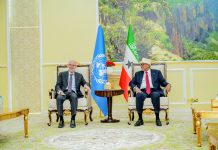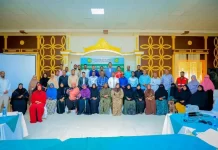The collapse of the Soviet Union and the victory of the West led to a jubilant era with enthusiastic hope for better and safer world. Even one scholar called it the “End of History”.
In the absence of rival superpowers in the United Nations Security Council, many expected the decrease of competition to create a less confrontational UN that could help troubled states to recover and maintain peace. But the tragedy in 1994 in Rwanda where 8, 00 000 people were massacred right in front of the world within a three month period proved that assumption wrong. Despite success made after the horrific occurrences, there are civilian people still suffering in many parts of the world. Tribunals were established to try war criminals in Rwanda and Yugoslavia, and the International Criminal Court commenced hearing cases of international crimes as a way of bringing justice and closure to the many who suffered. Somalilanders were not so lucky.
In Somaliland, where the catastrophe happened long before the Rwandan fiasco, the perpetrators of one of the deadliest and inhumane tragedies in Africa went unpunished, with some of them even enjoying impunity living in the West.
In 1988, the government of Somalia employed all of its resources to cleanse the people of Somaliland. Air bombardment, artillery shelling and intentional targeting of civilians left thousands of people dead, many more wounded and resulting in the destruction of whole cities.
The massacre orchestrated by the Siad Barre regime did not commence in 1988, but had been in motion since the early 1980s. However, the greatest numbers were killed from May 1988 to February 1991.
According to eye witnesses and survivors, apart from the shelling and bombardment, the military and other forces collected civilians from the streets, homes, and other places into military compounds. The innocent civilians were tied to each other and shot in cold blood. For instance on the 3rd of June 1988, 800 civilians were killed at the headquarters of the military in Hargeisa. A survivor detailed how each hundred was lined and then machine gunned. That was one single incident.
It is quite reprehensible that the culprits were never brought to justice. The victims and families still await justice and while they are not hopeless, hope is fading away.
The injustice is again manifested by the lack of recognition. The survivors are isolated from the world. Somaliland has been waiting for recognition since 1991. The world fails to understand that the reason we separated from Somalia is not because of luxury or euphoria, but it is the only way we can leave behind a dark history imbedded in our memories so that we can pursue our own path.
I grew up while the conversations between my mother and her best friend Amina ended up talking about what Faqash or Afwayne has done. As a child, I could not understand much. But I thought that Faqash and Afwayne were aliens from somewhere far who came to the land to kill everyone. When I became old enough to read history and make sense of their conversations, I was shocked to learn that Afwayne was our president and Faqash was our government. I do not want to suffer how my family did. That is why I stand for human rights and justice. I do believe that a recognized Somaliland where human rights are respected and protected can be a remedy for the past and a way of honoring the memory of all the people who suffered untold crimes committed against them.
Guleid Ahmed Jama
Hargeisa Somaliland
http://guleidjama.blogspot.com/






























